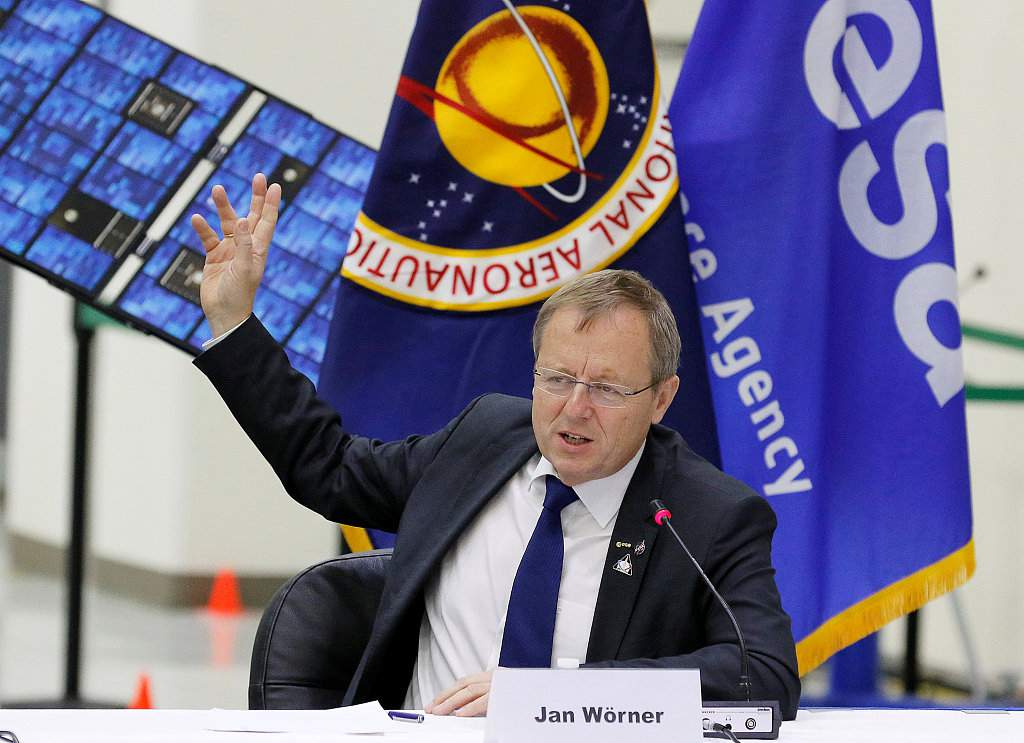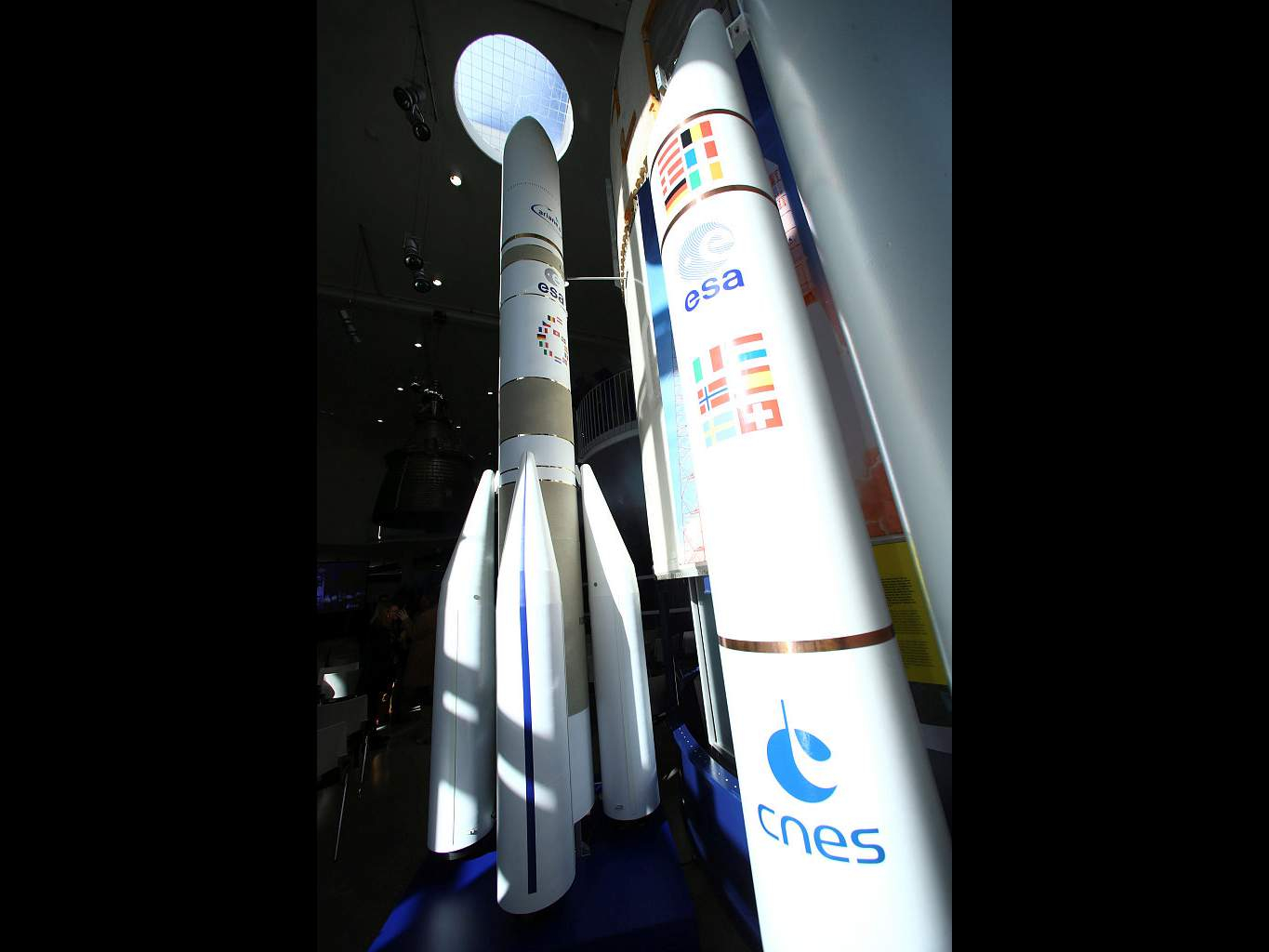European Space Agency (ESA) members agreed on a record 14.4 billion euros budget Thursday, promising to maintain Europe's place at the top table as the United States and China press ahead and industry disruptors such as Elon Musk's Space X present new challenges.
The budget is split, with 12.5 billion euros (14.1 billion U.S. dollars) committed for three years and the full 14.4 billion euros over five, representing an increase of some four billion euros on the previous spending plan.
"It's a surprise, even more than I proposed... this is good," ESA head Jan Woerner told a news conference after ministers from the 22 member states met in Seville for two days.

ESA head Jan Woerner speaks with NASA officials at a ceremony marking the arrival of the European Service Module at the Kennedy Space Center in Cape Canaveral, Florida, U.S., November 16, 2018. /VCG Photo
ESA head Jan Woerner speaks with NASA officials at a ceremony marking the arrival of the European Service Module at the Kennedy Space Center in Cape Canaveral, Florida, U.S., November 16, 2018. /VCG Photo
Woerner said the funding pledges meant that ESA could run a full series of programs plus additional scientific work, citing moves to increase earth observation as part of efforts, among other things, to monitor climate change.
"It is a giant step forward for Europe, fifty years after the moon landing," said Jean-Yves Le Gall, head of the French space agency.
"We have beaten all records in terms of financial contributions," Le Gall added.
Germany made the largest contribution to the budget, at some 3.3 billion euros, followed by France on 2.7 billion euros, Italy 2.3 billion euros and Britain with 1.7 billion euros.
The ESA is not a European Union body and so Britain's position as a member remains unchanged despite Brexit.
To reinforce that message, the UK Space Agency issued a statement recalling that Britain was one of ESA's founding members and detailing its commitments to a series of programs including earth observation, 5G telecoms and monitoring space debris.
Moon, Mars, science
Among the projects, ESA highlighted were the first gravitational wave detector in space, LISA, and the black hole mission Athena, designed to "enable fundamental advances in our understanding of the basic physics of the Universe."
ESA reiterated its commitment to the International Space Station until 2030 and its participation in the Gateway project, the first space station planned to orbit the Moon.
"European astronauts will fly to the Moon for the first time," it said in a closing statement, and ESA will support a "groundbreaking Mars Sample Return mission in cooperation with NASA."
In telecommunications, ESA aims to help develop flexible satellite systems integrated with 5G networks, "as well as next-generation optical technology for a fiber-like 'network in the sky,' marking a transformation in the satellite communication industry."

A model of Europe's next-generation space rocket Ariane 6 at the German Aerospace Center in Lampoldshausen near Heilbronn, Germany, February 26, 2019. /VCG Photo
A model of Europe's next-generation space rocket Ariane 6 at the German Aerospace Center in Lampoldshausen near Heilbronn, Germany, February 26, 2019. /VCG Photo
Ministers also endorsed the transition to the next generation of launchers, the massive Ariane 6 and the smaller Vega-C, "and have given the green-light to Space Rider, ESA's new reusable spaceship."
Going into the meeting, ESA officials had said the agency was hoping to get increased funding to ensure Europe does not lag behind.
Europe has established itself as a major space player, with the Ariane 6 launcher the latest off the production line and the Galileo GPS system operational.
Critics say, however, that it has been slow to develop some key innovations – notably reusable rockets pioneered by the likes of Musk.
This "New Space" evolution has seen Musk develop reusable launchers for dramatically smaller yet more powerful satellites, many designed to create and run the "connected world" of driverless cars and countless other aspects of everyday life on earth.
Source(s): AFP